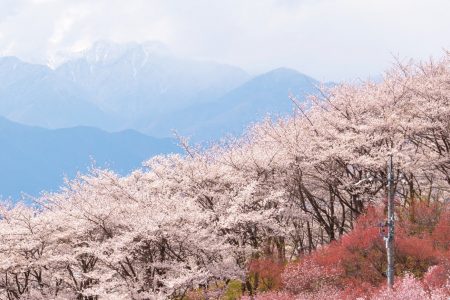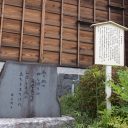
Just like many Japanese people go out to view and appreciate cherry blossoms and other flowers blooming in spring, they also go out to look at and enjoy the colourful leaves of deciduous (those that lose all of their leaves for part of the year, mainly broadleaf) trees in autumn. Momiji (紅葉), in a narrow sense, means a maple tree, but in a broader sense, the same Kanji (漢字 Chinese characters) compound is read in a different way “Kōyō (紅葉)”, coloured leaves of deciduous trees. It refers to different shades of red coloured leaves, but it is usually interpreted as autumn leaves of any other colour, notably yellow and brown. The word gari derives from kari (狩り) which means hunting. So, Momiji-gari literally means “Hunting for coloured leaves”.
What is Kōyō (紅葉)?
Kōyō (紅葉) is a phenomenon in which deciduous trees change the colour of their leaves before they fall on to the ground. In Japanese, strictly speaking, if the changed colour is red, they are called kōyō (紅葉 red leaves), if yellow, they are called kōyō/ōyō (黄葉 yellow leaves) and if brown, they are called katsuyō (褐葉 brown leaves). However, it is common to call all of them as kōyō (紅葉 leaves that have changed colour).

Origin
As mentioned above, the word “kari” refers to “hunting wild animals and birds” with weapons. However, “kari” expanded its meaning to “gathering or collecting fish, shellfish and edible plants” or “looking for flowers, edible plants and fruit trees in the mountains and fields, gathering or collecting them or simply appreciating them”. Nowadays, people in Japan often use such words as “shiohi-gari (潮干狩り gathering seashells)”, “budō-gari (ブドウ狩りgathering grapes)”, “kinoko-gari (キノコ狩りgathering mushrooms)”, “ichigo-gari (イチゴ狩りgathering strawberries)” and “hotaru-gari (蛍狩りappreciating fireflies)” amongst many others.
A brief history
It is believed that kizoku (貴族 noble class people) in the imperial court at the beginning of the Heian (平安) period (794–1191) started enjoying various kari such as “shika-gari (鹿狩りhunting deer)” or “inoshishi-gari (猪狩りhunting wild boars)” on horseback. However, going out to fields and mountains on foot was considered to be something that the nobles should not do, because only lower class people should have to walk in day-to-day life. Nonetheless, it was difficult to get to fields and mountains in gissha (牛車 ox-driven carriage) so when the nobles wanted to go out to fields and mountains on foot to gather flowers, other plants and fruit or to appreciate the coloured leaves, they borrowed the term “-kari/-gari (狩り)” to justify their behaviour/action. Since then, Momiji-gari has been a popular pastime for many people in Japan in autumn.
When is the best time for Momiji-gari?
As opposed to the “Sakura-zensen (桜前線front-line of cherry blossoms)” starting in March in the southern part of Japan, the front-line of “Kōyō-zensen (紅葉前線)”, the best viewing time for Momiji-gari, starts in the Daisetsuzan (大雪山) area in Hokkaidō (北海道) in September and gradually moves southward. Usually, it takes about a month from when leaves start colouring to the end, and the best view is 20–25 days after the beginning. Consequently, October is the best viewing season for the Hokkaidō and Tōhoku (東北) regions, while November and the beginning of December are the best viewing periods from the Kantō (関東) to Kyūshū (九州) regions.
Where to visit for Momiji-gari (紅葉狩り)?
Unlike “Hanami (花見 flower viewing)” in spring where a large number of people enjoy their own parties under cherry blossom trees with food and drinks, people who enjoy Momiji-gari (紅葉狩り) tend to enjoy walking or hiking in the fields and mountains where they can marvel at all kinds of combinations of coloured leaves. Alternatively, they go for a drive in the mountains to appreciate a panorama of different colours. There are so many places recommended in various guidebooks (and websites), but even a small park nearby could present you with beautifully coloured trees. So, all you need to do is to go out and enjoy this pageant during those few weeks.
Author
Dr Shunichi Ikeda
BA Hons (ANU)
Senior Lecturer, School of Culture, History & Language
ANU College of Asia and the Pacific











